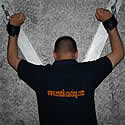#1
Open your web page file in your HTML text editor. You can use any plain text editor such as Notepad. Scroll to the section of the file between the "<head>" and "</head>" tags. This is where your meta tags are located.
#2
Enter the first meta tag. The first meta tag is the "expires" specification. This is a date set in the past. It instructs the browser that the content has expired each time it determines to cache the web page. An expiration date in the past forces the browser to query for a new page each time the user navigates to the website. The following code sets the expiration meta tag:
<meta http-equiv = "expires" value = "Wed, 22 Dec 2009 12:00:00 GMT" />
#3
Set the "no cache" meta tag. This tag is also used to restrict browsers that may not support the "Expires" meta tag. This tag is also used by mobile phones, so cellular users do not cache the web page. Enter the following code into your page:
<meta http-equiv = "pragma" content = "no-cache" />
Read more: How to Stop a Web Page From Caching | eHow.com
http://www.ehow.com/how_6544958_stop...#ixzz1GPKiiKlf




 Reply With Quote
Reply With Quote



Bookmarks